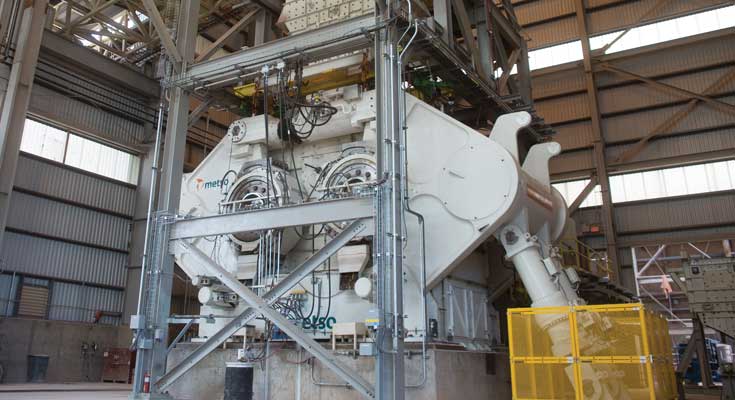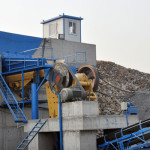HRC high pressure grinding rolls
The Metso HRC™ takes HPGR technology to the next level by providing a simple yet robust design that maximizes efficiency, availability and reliability.

APPLICATIONS
Common use cases:
Tertiary or quaternary crushing stages
Pebble crushing
Open or closed circuit operations
Applicable industries:
Mining applications
Aggregate applications
Industrial minerals applications
Features
High pressure grinding rolls are an energy efficient grinding solution, and now Metso has improved this technology even further. The HRC™, our innovative approach to HPGR technology, is like no other HPGR on the market.
Main features of the HRC™ HPGR are:
Patented anti-skewing Metso Arch-frame
Tungsten carbide studded tires with patent pending HRC™ HPGR flanges
Feed hopper with guide plates to direct the feed into the crushing zone
Hydraulic cylinders can be adjusted to provide the optimal crushing force
Variable speed drive train suitable to run between 110% to 30%* full speed (*select sizes run between 110% to 50% full speed)
Dust enclosure to provide a dust and noise barrier while also offering added protection for the main bearings
Benefits
Increased circuit efficiency and capacity – flanges direct material to the crushing zone, maximizing the amount of ore crushed. In a closed circuit pilot scale operation, this amounted to over a 20% increase in circuit capacity and over a 10% decrease in circuit specific energy
Improved availability – patented Arch-frame eliminates downtime associated with skewing
Increased reliability – anti-skewing Arch-frame prevents bearings from being damaged due to misalignment
Reduced operating costs – energy efficiency, longevity of wear components including the studded tires and no use of grinding media all contribute to low operating costs
Flexible operating parameters – speed and pressure can be adjusted for changing ore conditions and downstream circuit demands
Process overview
HPGRs utilize two counter-rotating tires or rolls in order to effectively crush ore. Hydraulic cylinders apply very high pressure to the system, causing inter-particle comminution as the feed travels between the two tires.

